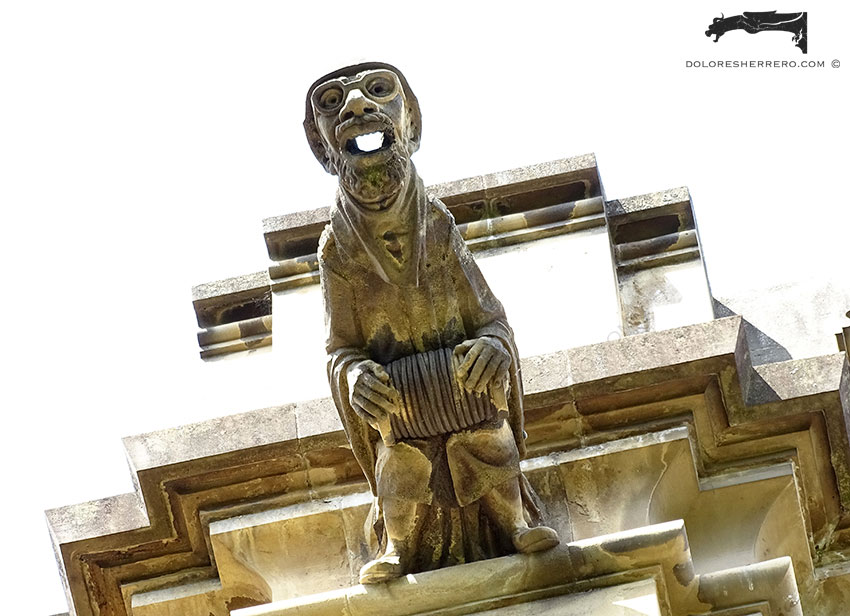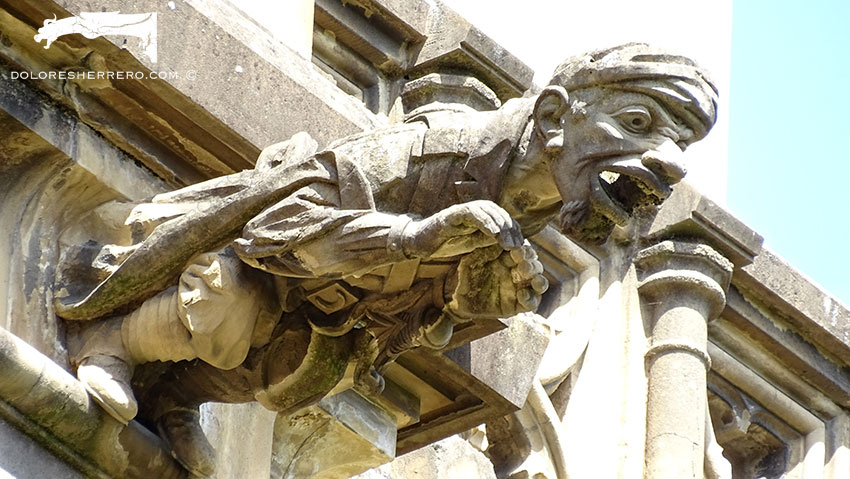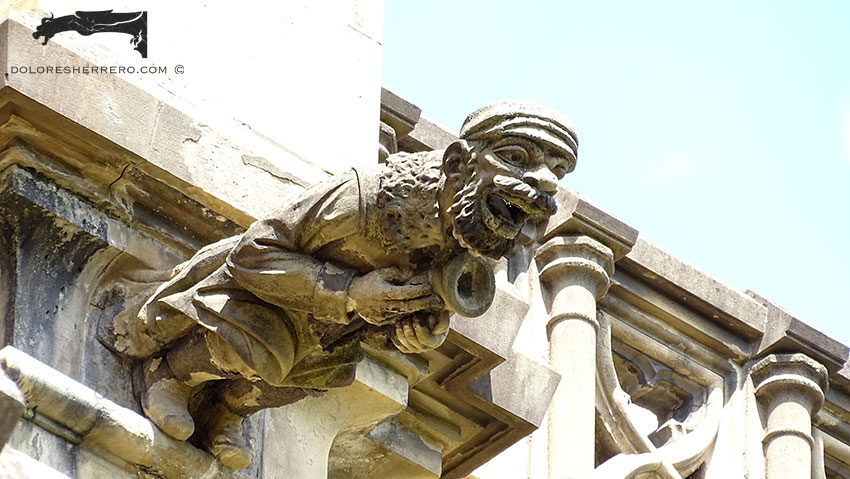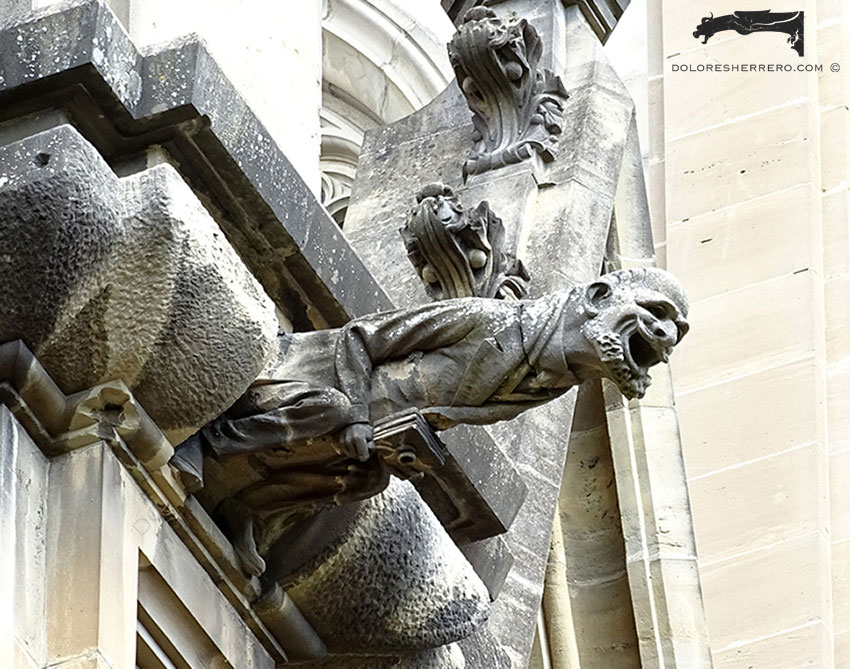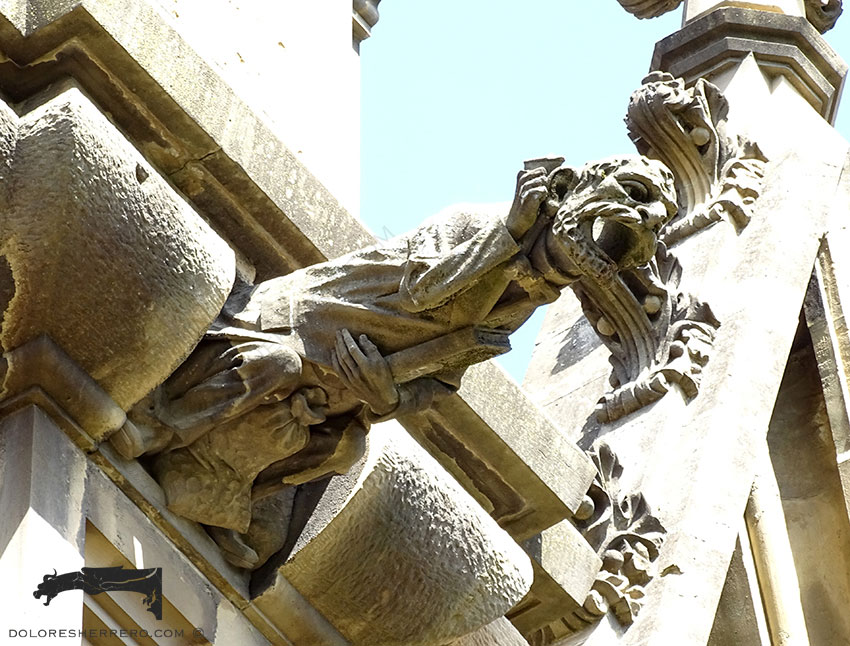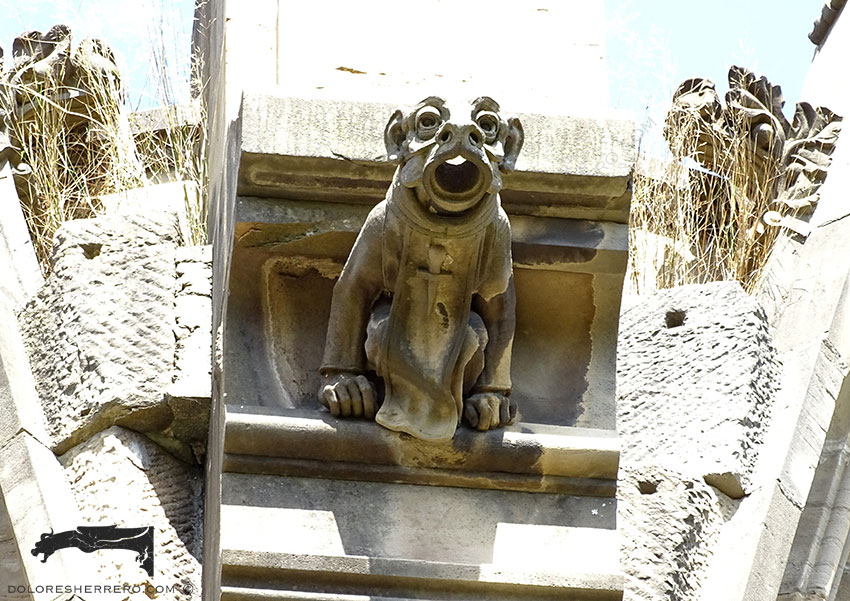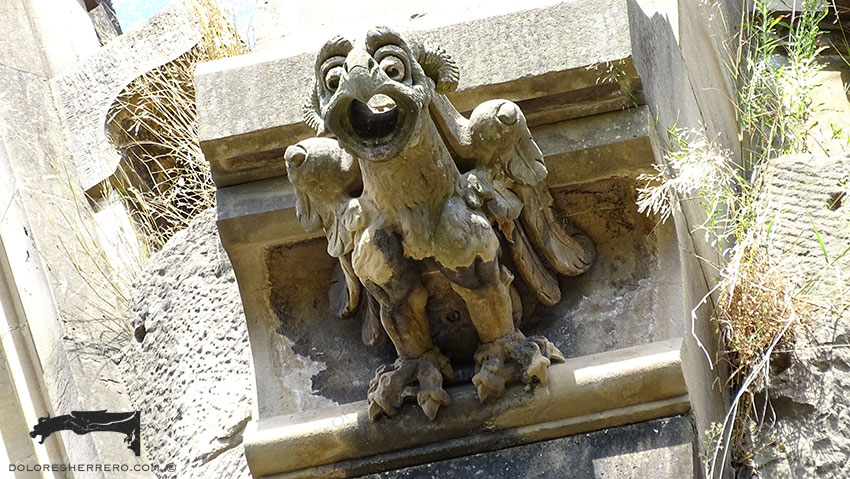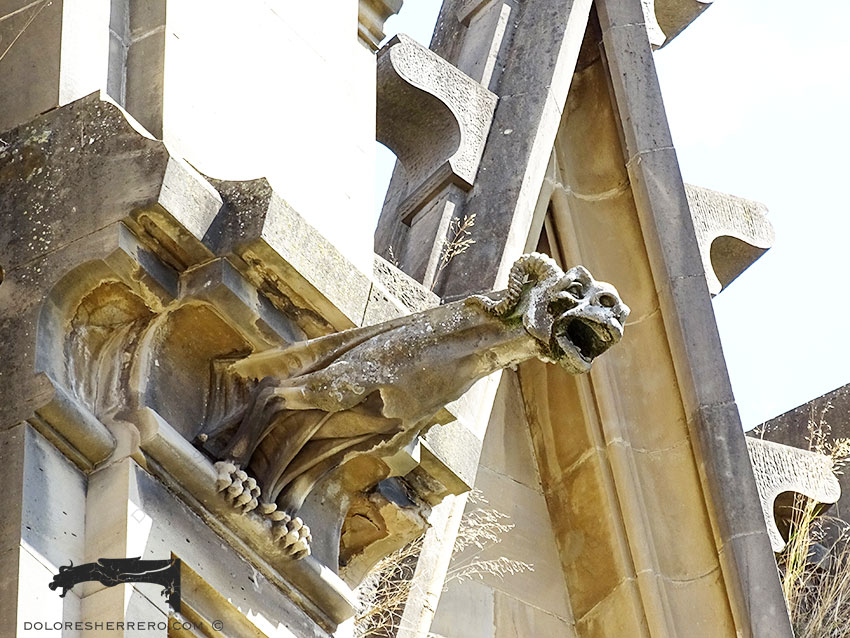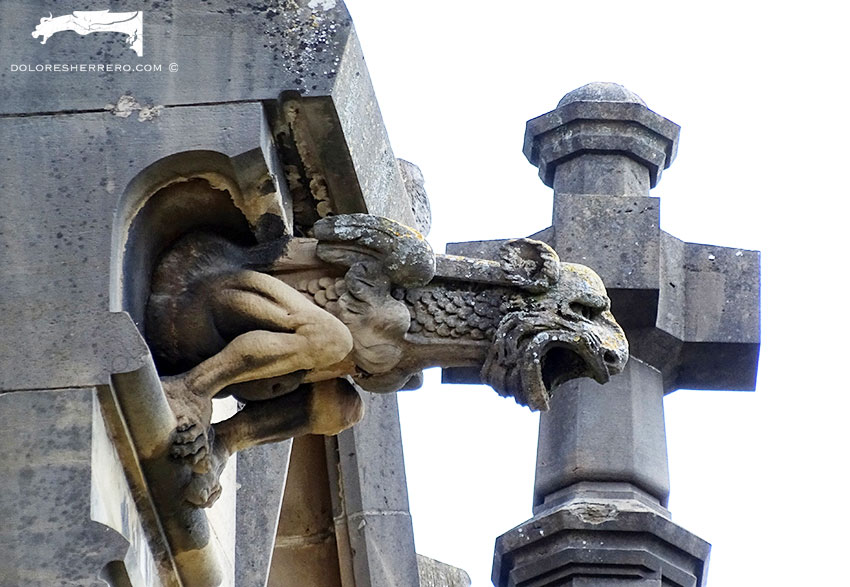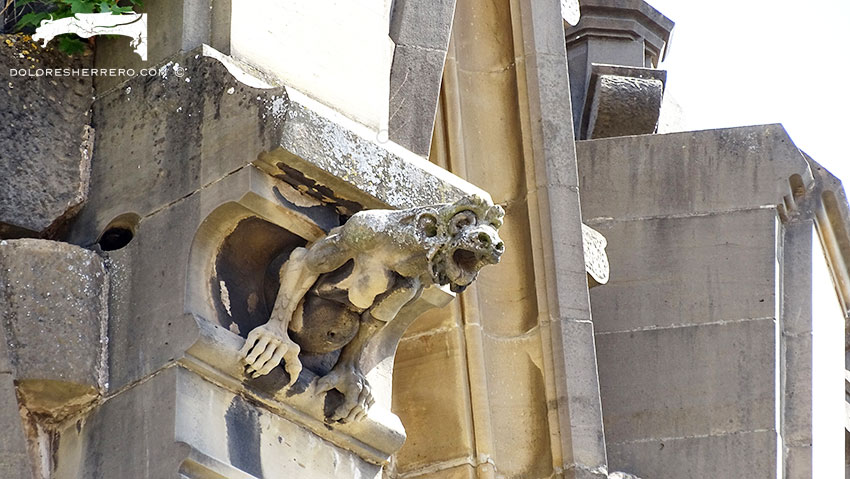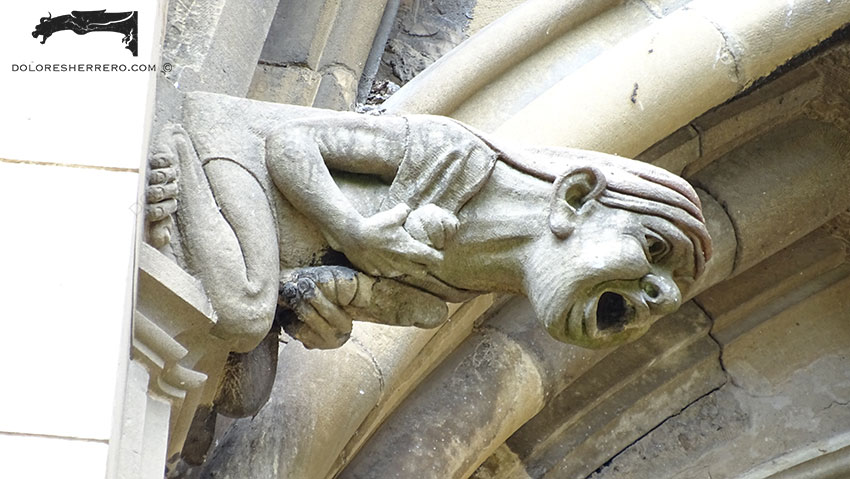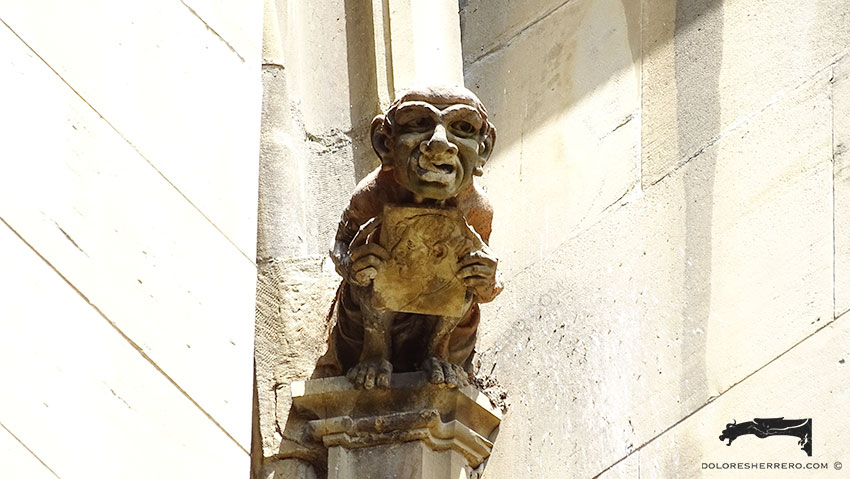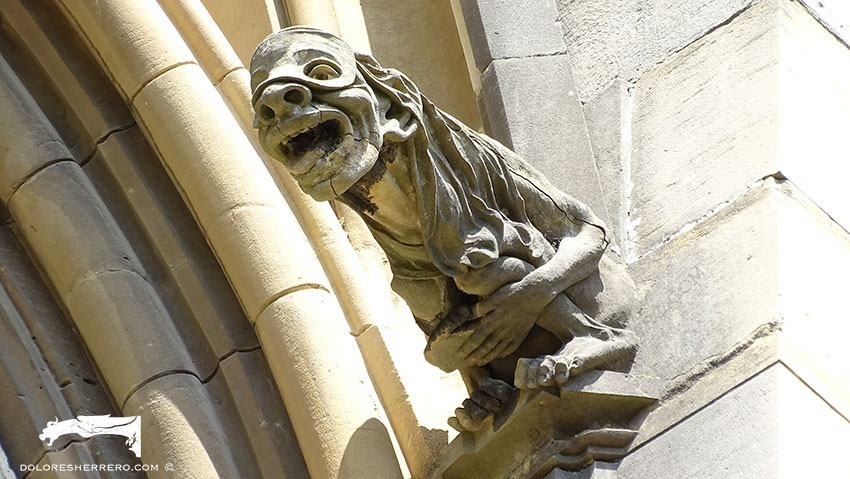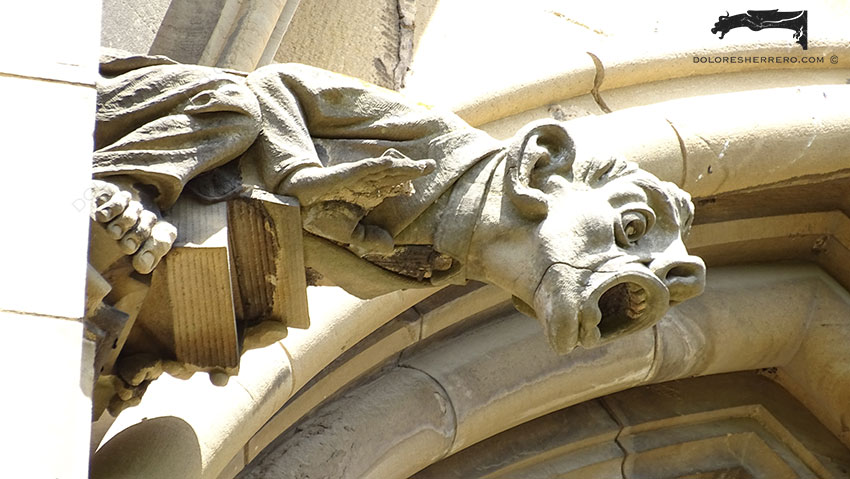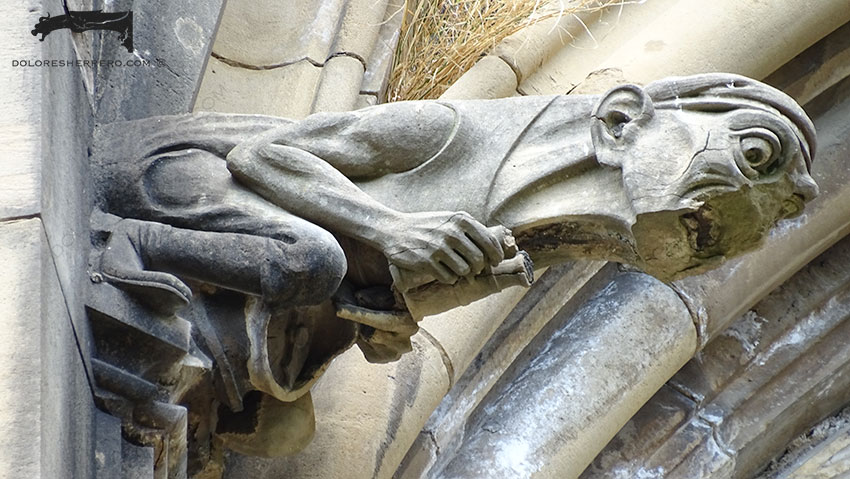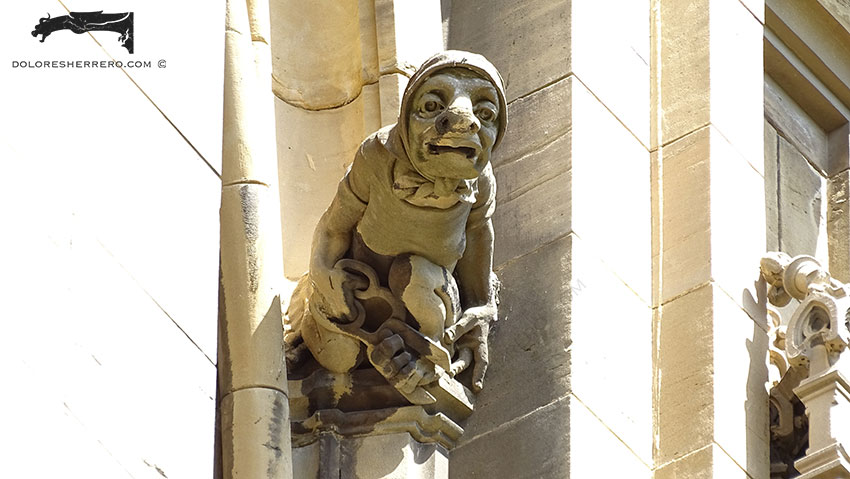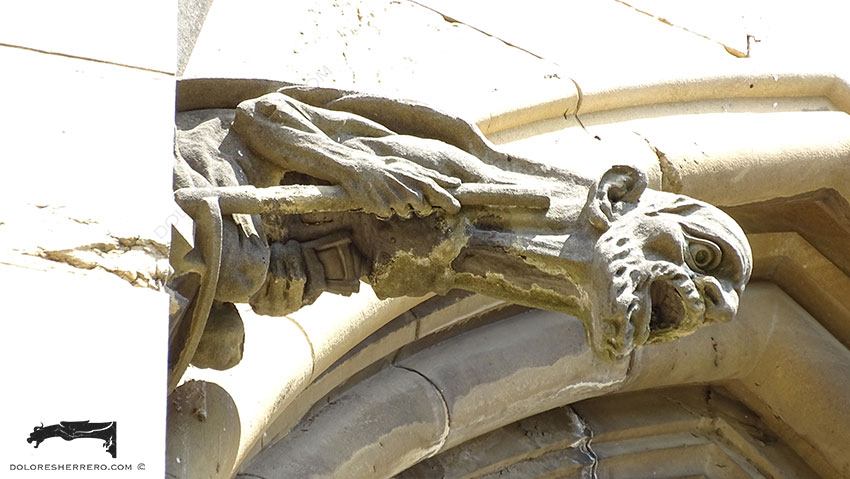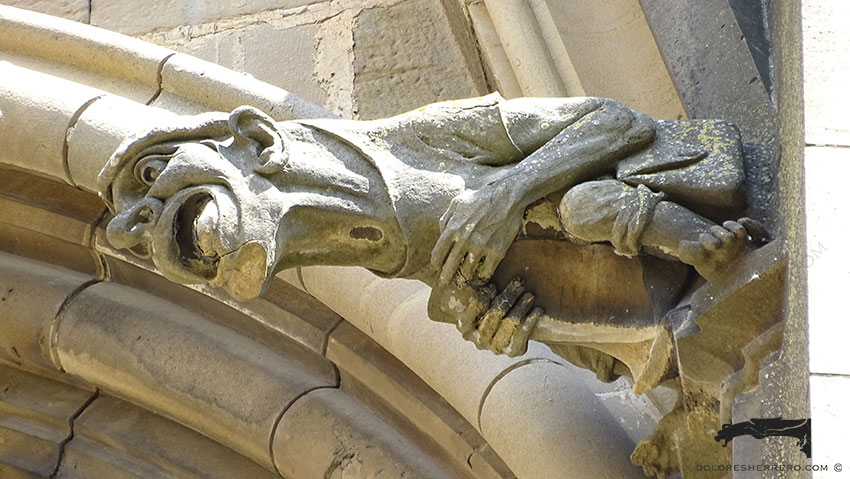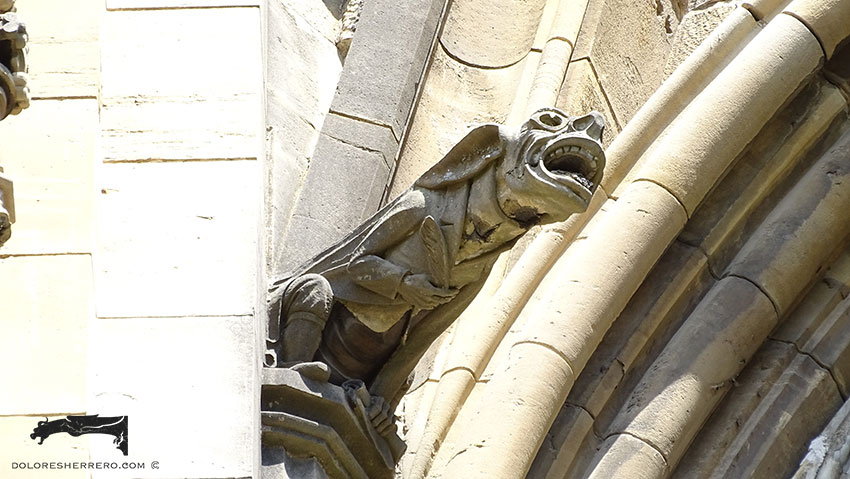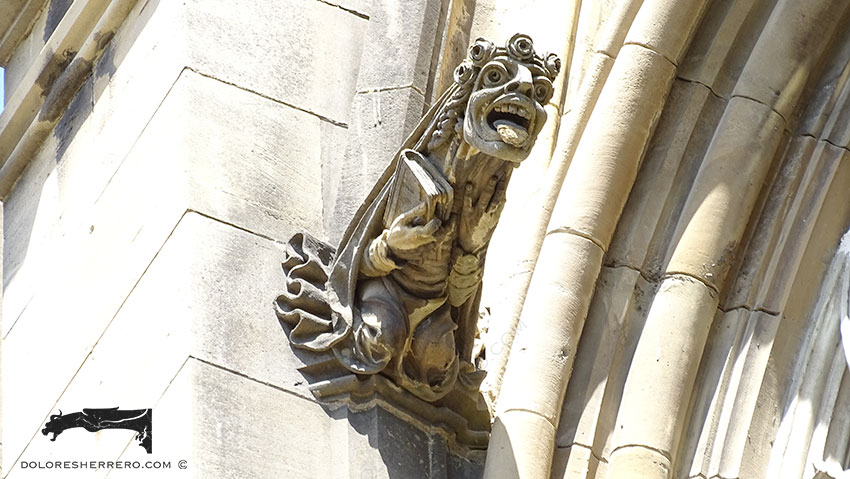We continue our trip to Vitoria (Spain) to enjoy the latest gargoyles placed around the Cathedral of María Inmaculada.
The cathedral was built in the Neo-Gothic style (1907-1969) and is known as “Catedral Nueva” (New Cathedral) to distinguish it from the Gothic cathedral of Santa María (“Catedral Vieja” or Old Cathedral).
The gargoyles on the north and south sides of the building were sculpted by Aurelio Rivas between 1964 and 1965.
In this second part on the gargoyles on “Catedral Nueva” we continue to discover and enjoy some surprising and very imaginative gargoyles.
All of them are gargoyles of impressive formal and thematic richness and beauty. Each one of them has a story, a project designed for the future, and meticulous research work behind it. Here we are simply going to show you the images for the enjoyment of gargoyle lovers. Nevertheless, it should be noted that the iconography of many of them is related to Miguel Apraiz’s life experience during the civil war. Miguel Apraiz was the lead architect of the works and the designer of the gargoyles. Likewise, we see all kinds of monsters, demons and fantastical beings. The grotesques or chimeras also form an extraordinary set, both in terms of form and theme.
Unusual, enigmatic, grotesque, expressive, with a fascinating iconography and admirable craftsmanship. A superb and extraordinary set of gargoyles that we were lucky enough to come across on our trip to Vitoria and that are part of the Basque Country’s priceless artistic heritage.
Gargoyles
- Catedral de María Inmaculada (Vitoria)

Grotesques
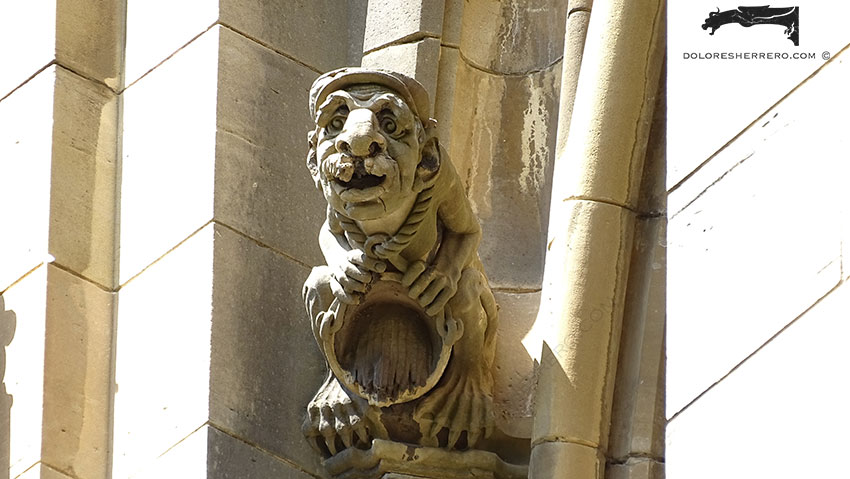

Doctor of Art History and researcher specializing in the study of gargoyles.
I am Dolores Herrero Ferrio, and my thesis, “An Approach to the Study of Gargoyles of Gothic Cathedrals in Castilla and León”, is dedicated to the study of these fascinating figures.
If you like gargoyles and art history, you will also enjoy my book, “The Gargoyle and Its Iconography,” a book I have written with great care for those interested in the world of gargoyles.
I have created my own Encyclopedia of Gargoyles, a Gargopedia to share with you, where you will discover all the secrets and wonders of these enigmatic sculptures.
I hope you enjoy this Gargopedia as much as I have enjoyed creating it, and remember that each gargoyle has a story to tell, and here you will discover them all.


